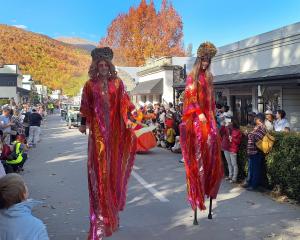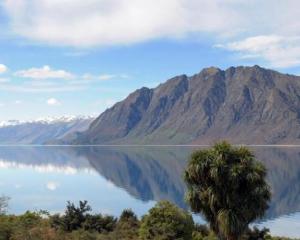Treatment issues concerning the Queenstown Lakes District Council's water supply have bubbled to the surface for the third time this summer.
Wanaka's water supply is the most recent to be affected, with Central Otago's recent heat wave being blamed by the district council for an algal bloom which is contaminating drinking water.
The algal bloom affecting Wanaka's drinking water follows separate incidents affecting residents at Lake Hawea and Lake Hayes, where traces of the harmful bacteria E-coli were discovered in the water supply.
In both instances, warnings were issued to boil drinking water.
District council water manager Gerry Essenberg said testing had identified 13 different types of algae in Lake Wanaka, from which the resort draws its drinking water.
Despite recent water supply issues, Mr Essenberg said Queenstown Lakes residents should be confident the council was providing suitable drinking water.
The three separate incidents were all "different problems" which were linked to infrastructure issues at unrelated water reservoirs and intake stations, he said.
"There is no issue with the quality of water coming out of the tap," Mr Essenberg said.
Filtration issues were being blamed for a higher count of algae being drawn into water intakes and this was affecting water pressure in Wanaka, a council press release said yesterday.
A combination of recent warm weather, an increased amount of nutrients being washed into the lake and a fine mesh filter not doing its job properly were all factors in the algae making its way into Wanaka's water supply, the press release stated.
Weather conditions were also blamed for Lake Hawea's drinking water contamination, with increased rainfall and excess run-off cited as a cause of E coli finding its way past treatment measures.
Wanaka residents have not been issued with a boil-water notice.
Water mains were being flushed to try to clear algal build-up on mesh filters and reinstate proper water pressure, Mr Essenberg said.
Wanaka ward councillor and community board chairman Lyal Cocks said the main problem was with the algae dying and then getting into the water supply.
"Its a nuisance as opposed to presenting any health risk," he said.
The installation last year of a finer mesh filter over the water intake had not entirely prevented algae from being drawn into the intake chambers of the reservoir.
A more viable solution was being sought, Mr Essenberg said.
Sampling was being carried out to determine when the algae occurred, the type and structure of the algae and the depth and temperature at which it grew.
Anyone with a reduced amount of water pressure should call a plumber and have their filter checked, he said.
The situation was "clearly not satisfactory", Mr Cocks said.












